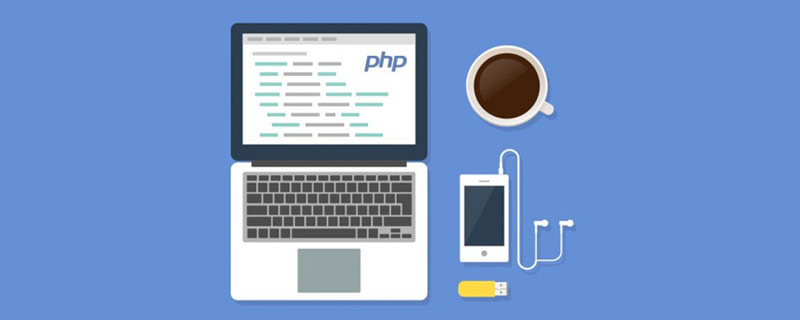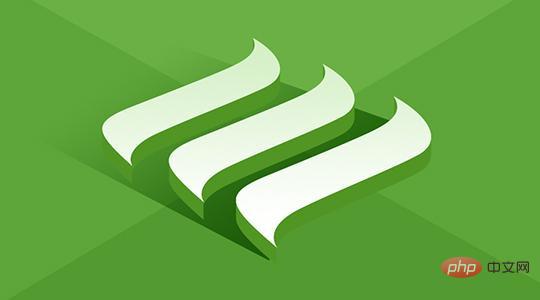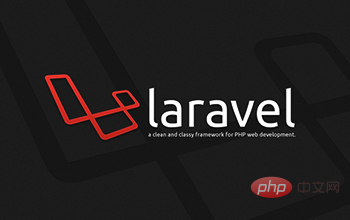 Backend Development
Backend Development
 PHP Tutorial
PHP Tutorial
 The advantages and disadvantages of mainstream PHP frameworks that you can understand at a glance
The advantages and disadvantages of mainstream PHP frameworks that you can understand at a glance
The advantages and disadvantages of mainstream PHP frameworks that you can understand at a glance

In this article, we will talk about the advantages and disadvantages of the four major PHP frameworks, so that you can better choose which PHP framework to use to complete the project during development, nonsense. Without further ado, let’s take a look! !
ThinkPHP
ThinkPHP (FCS) is a lightweight medium-sized framework, which is a Chinese PHP development framework transplanted from Java's Struts structure.
It uses object-oriented development structure and MVC mode, and simulates the tag library of Struts. It is more user-friendly in all aspects. It is relatively easy for developers familiar with J2EE to get started, and it is suitable for beginners of PHP framework.
The purpose of ThinkPHP is to simplify development, improve efficiency, and be easy to expand. Its support for databases already includes support for MySQL, MSSQL, Sqlite, PgSQL, Oracle, and PDO.
ThinkPHP has rich documentation and examples. The framework has strong compatibility, but its functions are limited, so it is more suitable for the development of small and medium-sized projects.
Advantages:
1. Easy to use, rich Chinese documentation;
2. The framework has strong compatibility, PHP4 and PHP5 are fully compatible Compatible and fully supports UTF8, etc.
3. Suitable for the development of small and medium-sized projects
Disadvantages:
1. The support for Ajax is not very good;
2. The directory structure is confusing and takes time to sort out;
3. It is easy to get started, but difficult to learn in depth.

Yii
Yii is a high-performance component-based PHP framework for developing large-scale Web applications.
Yii is written in strict OOP and has complete library references and comprehensive tutorials.
From MVC, DAO/ActiveRecord, widgets, caching, hierarchical RBAC, Web services, to theming, I18N and L10N, Yii provides almost everything needed for today's Web 2.0 application development. In fact, Yii is one of the most efficient PHP frameworks.
Advantages:
1. Pure OOP
2. Used for large-scale web applications
3. The model is easy to use
4. The development speed is fast and the running speed is also fast. Excellent performance and rich features
5. Use command line tools.
Disadvantages:
1. There is less guidance and consideration on the Model layer
2. Few document examples
3. Too much English
4. It requires proficiency in PHP technology and proficiency in OOP programming!
5. View is not an ideal view. The ideal view may be just html code and will not involve PHP code.
CodeIgniter
Advantages:
1.Code Igniter advocates the principle of "simplicity is beauty". There are no fancy design patterns, no fancy object structures, everything is so simple.
2. A few lines of code can start running, and a few more lines of code can be added to output. It can be said to be a model of "great simplicity".
3. The configuration is simple, all configurations are configured using PHP scripts, and the execution efficiency is high;
4. It has basic routing functions and can perform routing to a certain extent;
5. It has preliminary Layout function and can create a certain level of interface appearance;
6. The database layer is well encapsulated and has basic MVC functions. It is fast and concise, with not much code, high execution performance and simple framework. Easy to use, low learning cost, detailed documentation;
7. It comes with many simple and easy-to-use libraries, and the framework is suitable for small applications.
Disadvantages:
1. The implementation itself is not ideal. The internal structure is too confusing, and although it is simple and easy to use, it lacks expansion capabilities.
2. Simply understand the Model layer as database operations.
3. The framework is slightly simple and can only meet the needs of small applications, but is slightly less able to meet the needs of medium-sized applications.
Evaluation:
Overall In other words, it is worthwhile to use CodeIgniter to complete simple and fast applications. At the same time, it can construct a certain degree of layout to facilitate the reuse of templates.
The data operation layer is well encapsulated, and CodeIgniter does not use many too complex design patterns, and the execution performance and code readability are both good.
As for the additional library, it is not bad, simple and efficient.

Lavarel Framework
Advantages:
1. Laravel’s design ideas are very advanced and very suitable for Apply various development patterns TDD, DDD and BDD.
2. The biggest feature and excellence of laravel is that it integrates relatively new features of PHP and various design patterns.
3.Ioc container, dependency injection, etc.
Disadvantages:
Based on a component-based framework, so it is relatively bloated

More Multiple tutorials: "php tutorial"
The above is the detailed content of The advantages and disadvantages of mainstream PHP frameworks that you can understand at a glance. For more information, please follow other related articles on the PHP Chinese website!

Hot AI Tools

Undresser.AI Undress
AI-powered app for creating realistic nude photos

AI Clothes Remover
Online AI tool for removing clothes from photos.

Undress AI Tool
Undress images for free

Clothoff.io
AI clothes remover

Video Face Swap
Swap faces in any video effortlessly with our completely free AI face swap tool!

Hot Article

Hot Tools

Notepad++7.3.1
Easy-to-use and free code editor

SublimeText3 Chinese version
Chinese version, very easy to use

Zend Studio 13.0.1
Powerful PHP integrated development environment

Dreamweaver CS6
Visual web development tools

SublimeText3 Mac version
God-level code editing software (SublimeText3)

Hot Topics
 1664
1664
 14
14
 1423
1423
 52
52
 1317
1317
 25
25
 1268
1268
 29
29
 1242
1242
 24
24
 PHP and Python: Comparing Two Popular Programming Languages
Apr 14, 2025 am 12:13 AM
PHP and Python: Comparing Two Popular Programming Languages
Apr 14, 2025 am 12:13 AM
PHP and Python each have their own advantages, and choose according to project requirements. 1.PHP is suitable for web development, especially for rapid development and maintenance of websites. 2. Python is suitable for data science, machine learning and artificial intelligence, with concise syntax and suitable for beginners.
 PHP in Action: Real-World Examples and Applications
Apr 14, 2025 am 12:19 AM
PHP in Action: Real-World Examples and Applications
Apr 14, 2025 am 12:19 AM
PHP is widely used in e-commerce, content management systems and API development. 1) E-commerce: used for shopping cart function and payment processing. 2) Content management system: used for dynamic content generation and user management. 3) API development: used for RESTful API development and API security. Through performance optimization and best practices, the efficiency and maintainability of PHP applications are improved.
 Explain secure password hashing in PHP (e.g., password_hash, password_verify). Why not use MD5 or SHA1?
Apr 17, 2025 am 12:06 AM
Explain secure password hashing in PHP (e.g., password_hash, password_verify). Why not use MD5 or SHA1?
Apr 17, 2025 am 12:06 AM
In PHP, password_hash and password_verify functions should be used to implement secure password hashing, and MD5 or SHA1 should not be used. 1) password_hash generates a hash containing salt values to enhance security. 2) Password_verify verify password and ensure security by comparing hash values. 3) MD5 and SHA1 are vulnerable and lack salt values, and are not suitable for modern password security.
 Explain the difference between self::, parent::, and static:: in PHP OOP.
Apr 09, 2025 am 12:04 AM
Explain the difference between self::, parent::, and static:: in PHP OOP.
Apr 09, 2025 am 12:04 AM
In PHPOOP, self:: refers to the current class, parent:: refers to the parent class, static:: is used for late static binding. 1.self:: is used for static method and constant calls, but does not support late static binding. 2.parent:: is used for subclasses to call parent class methods, and private methods cannot be accessed. 3.static:: supports late static binding, suitable for inheritance and polymorphism, but may affect the readability of the code.
 PHP: A Key Language for Web Development
Apr 13, 2025 am 12:08 AM
PHP: A Key Language for Web Development
Apr 13, 2025 am 12:08 AM
PHP is a scripting language widely used on the server side, especially suitable for web development. 1.PHP can embed HTML, process HTTP requests and responses, and supports a variety of databases. 2.PHP is used to generate dynamic web content, process form data, access databases, etc., with strong community support and open source resources. 3. PHP is an interpreted language, and the execution process includes lexical analysis, grammatical analysis, compilation and execution. 4.PHP can be combined with MySQL for advanced applications such as user registration systems. 5. When debugging PHP, you can use functions such as error_reporting() and var_dump(). 6. Optimize PHP code to use caching mechanisms, optimize database queries and use built-in functions. 7
 What are HTTP request methods (GET, POST, PUT, DELETE, etc.) and when should each be used?
Apr 09, 2025 am 12:09 AM
What are HTTP request methods (GET, POST, PUT, DELETE, etc.) and when should each be used?
Apr 09, 2025 am 12:09 AM
HTTP request methods include GET, POST, PUT and DELETE, which are used to obtain, submit, update and delete resources respectively. 1. The GET method is used to obtain resources and is suitable for read operations. 2. The POST method is used to submit data and is often used to create new resources. 3. The PUT method is used to update resources and is suitable for complete updates. 4. The DELETE method is used to delete resources and is suitable for deletion operations.
 How does PHP handle file uploads securely?
Apr 10, 2025 am 09:37 AM
How does PHP handle file uploads securely?
Apr 10, 2025 am 09:37 AM
PHP handles file uploads through the $\_FILES variable. The methods to ensure security include: 1. Check upload errors, 2. Verify file type and size, 3. Prevent file overwriting, 4. Move files to a permanent storage location.
 How does PHP type hinting work, including scalar types, return types, union types, and nullable types?
Apr 17, 2025 am 12:25 AM
How does PHP type hinting work, including scalar types, return types, union types, and nullable types?
Apr 17, 2025 am 12:25 AM
PHP type prompts to improve code quality and readability. 1) Scalar type tips: Since PHP7.0, basic data types are allowed to be specified in function parameters, such as int, float, etc. 2) Return type prompt: Ensure the consistency of the function return value type. 3) Union type prompt: Since PHP8.0, multiple types are allowed to be specified in function parameters or return values. 4) Nullable type prompt: Allows to include null values and handle functions that may return null values.



